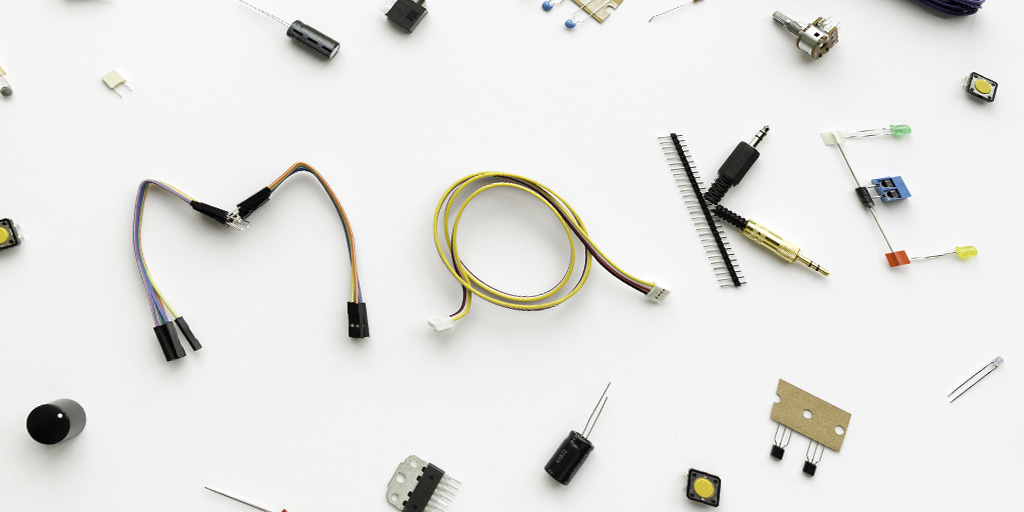Everybody loves stories, no matter if we are hearing them or telling them. Exploring digital..
Using a makerspace does more than just keep your students busy building things. At their very best, makerspaces bring tactile learning experiences together with the power of inquiry-based instruction. When it comes to environments for igniting constructive exploration and powerful discovery, there’s nothing like them. Learners absolutely love being set loose in a makerspace because they get to take control of their learning in ways that excite them.
How can you use a makerspace to ensure truly authentic and meaningful learning takes place? What are some home-run project ideas learners will really get fired up about? What are some of the best resources for getting started? We’ll answer all those questions and more, so let’s begin.
Makerspaces, Inquiry, and Problem-Solving
Laura Flemming, author of Worlds of Making, defines makerspaces this way:
“To define a school makerspace by its purpose and simplest of terms, it is a place where young people have an opportunity to explore their own interests; learn to use tools and materials, both physical and virtual; and develop creative projects."
In many ways, a makerspace is the ideal space for almost any student that’s hands-on about learning. It’s an environment where they can work alongside teachers, parents, peers, and mentors to solve problems and develop critical thinking skills for all sorts of practical real-world applications.
Arguably, makerspaces have been around since we humans first started working with our hands to build our world. However, the educational “maker movement” as we know it may have begun somewhere around the early 2000s, with the publication Make magazine.
No matter the origin, makerspaces are growing steadily in popularity in the education field. That’s because they provide multifaceted teaching arenas that develop a myriad of practical skills our learners can take with them well into their lives, including:
- Problem-solving
- Critical thinking
- Collaboration and teamwork
- Organizational skills
- Research and information skills
- Creativity and creative thinking
- Media skills
- Leadership
- Communication
What else about using a makerspace inspires truly meaningful learning experiences for our students? Here’s what else is unique and special about them.
- Makerspaces encourage creation. One of the most powerful ways we can learn is through tinkering, building, tearing down, revising, and so on. The point of a makerspace is that the learning is hands-on and physical, and provides an instant connection to relevance for the learner.
- Makerspaces are learner-centered. Though lessons that happen in them can be collaborative with a range of partners, the focus remains on the learner’s journey of inquiry, discovery, and construction.
- Makerspaces relate to the outside world. A learner’s work within them mimics situations that are present in the world outside school. The skills students learn in a makerspace are versatile and practical in nature. Such instructional experiences also provide the potential for them to foster a lifelong learning mindset.
- Makerspaces address differentiated learning. In a makerspace, learners are free to answer problems and face challenges in the ways most natural and inherent to them. That’s because such spaces are flexible and adaptable to a wide range of interests and abilities.
- Makerspaces connect multiple generations of learners. As we mentioned before, they invite learners young and old, and those of all skill levels. Everyone in such an environment, regardless of age or background, has the capacity to become both teachers and learners.
Using a Makerspace: 10 Cool Projects and More
If you’re interested in investing time and capital in a makerspace, there are plenty of resources at the end of this article that can help you get off the ground. In the meantime, if you already have one in your school, consider trying out these makerspace projects for your next big maker meetup.
- Build An Aircraft Engineering Challenge—The Homeschool Scientist blog features plenty of makerspace ideas, and this is one of their most popular ones.
- Circuit tiles—From Instructables comes this project to introduce learners to circuits in a “fun, ridiculous, iterative way.” You can also try a lesson for making a robotic cardboard hydraulic arm.
- Global Cardboard Challenge—Each year, kids everywhere take part in the Cardboard Challenge, which began with Caine's Arcade, the story of a 9-year boy’s elaborate self-made cardboard arcade.
- Make an Animation Machine—LEGO Education has a whole range of challenging makerspace projects for kids of all ages. In this one, kids design a machine that can make images move to create an animation.
- Working With Green Screens—Makerspace for Education features a variety of projects that involve green screen technology.
- Easy Hydraulic Machines—An easy-to-build project allowing learners to get hands-on experience with the function and design of a basic hydraulic-powered mechanism.
- NASA Touchdown—This challenge calls for learners to investigate gravity, motion, and forces to design and build a shock-absorbing system that will protect two "astronauts" as they land.
- Pecan Blaster—This project requires you to build a machine with two heavy-duty 115-volt appliance solenoids facing each other. It’s a nutcracker on steroids.
- Snare Drum Lights—These are snare drum lights that are impact reactive, lighting up whenever the drummer strikes the drum skin.
- 16 Teacher-Tested Makerspace Ideas—We’ll finish our list with 16 projects from Getting Smart. Build a “mopbot”, create a kinetic sculpture, assemble a Shakespeare-reciting donkey head, make some bears or aliens dance, and lots more.
Getting Started
- 7 Secrets for Creating an Amazing Classroom Makerspace
- 8 Questions To Ask Before Starting a Makerspace
- Designing a School Makerspace
- Beginners Guide To Starting a Makerspace
- 100+ Makerspace Materials & Supply List
- Stocking Up School Makerspaces
Solve Problems Using Makerspaces
Makerspaces were made for finding solutions to complex problems. With the right process to guide your learners, they can make their makerspaces powerful places to learn. We use Solution Fluency to empower learners in makerspaces all over the world to solve problems that matter. Now you can do the same with the help of the most complete in-depth problem solving resource out there, our very own Solution Fluency Companion.
It’s the ultimate guide to mastering Solution Fluency, from understanding to assessment and beyond. It’s packed with tips and tools designed to help you utilize, communicate, and facilitate the 6Ds of Solution Fluency in your makerspace. And here’s even better news—it’s available now for 15% off at our store.
Get it now, and bring the power of Solution Fluency to your makerspaces.









